| | The world is changing from drilling to building, and from stock to flow.͏ ͏ ͏ ͏ ͏ ͏ |
| |  | Energy |  |
| |
|
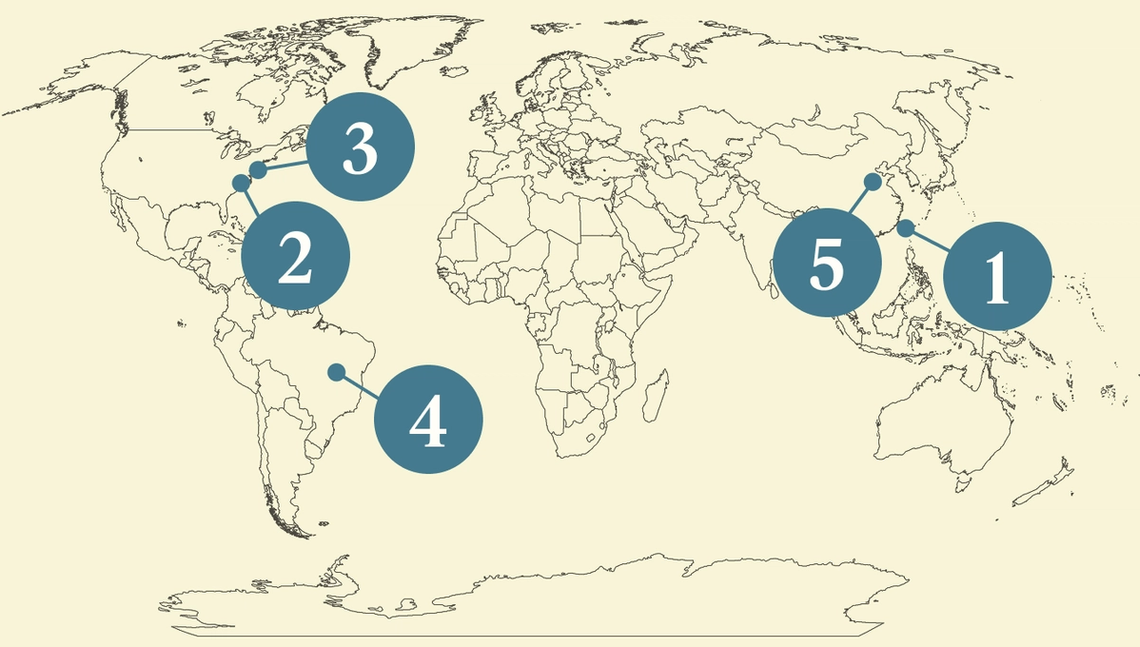 - Real energy sovereignty
- Winning energy arguments
- Transition tech is too slow
- Methane cash
- Beijing’s battery plans
 JPMorgan’s ‘pragmatic shift’ on climate finance. |
|
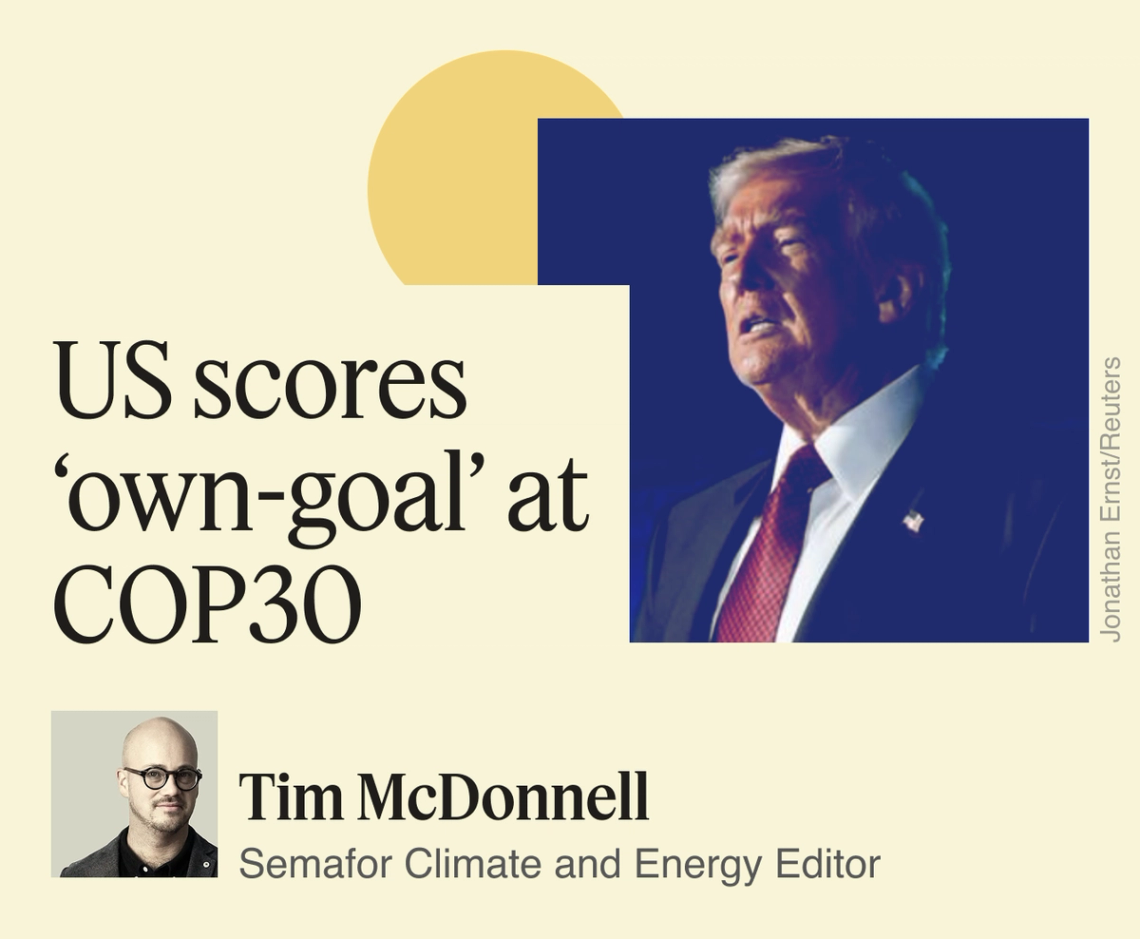 US President Donald Trump won’t join 53 other world leaders in Brazil today to kick off the COP30 climate summit, but he’ll loom large over the gathering nonetheless. The vibes at COP conferences resemble those of a middle-school cafeteria, including the peer pressure and the quality of the food. Very little that comes out of the meetings is legally binding. Instead, it’s a structured forum for countries to either one-up each others’ climate ambitions, or try to tamp them down. During the Obama and Biden administrations, the US used its bully pulpit to drag more recalcitrant countries like China and the Gulf petrostates to the table and sign them on to promises to cut carbon and shell out cash to help poorer countries. During Trump’s first term, US diplomats pulled out from the COP process, but there was still a degree of bipartisan support at home for things like renewable energy tax credits, such that the impact of the US withdrawal was fairly limited. Still, when Biden took office, it took time to restore American credibility in the COP negotiating rooms, Rick Duke, who was the deputy US climate envoy then, told me this week. This time around, there is more ideological animosity toward clean energy and climate action both within the administration and among top Congressional Republicans than ever. The potential international fallout from that attitude came through in a recent meeting of the International Maritime Organization, when US officials successfully campaigned to kill plans to impose a carbon fee on shipping. Some COP participants have told me they fear a repeat performance in Brazil. The White House, for its part, told me Trump is more focused on bilateral negotiations over energy issues with other world leaders, in the context of trade and peace talks rather than COP. Duke, for one, remains optimistic about the overall momentum at COP30. Dozens of countries, representing nearly two-thirds of global emissions, have already put forward new climate plans that, while leaving plenty to nitpick, show some degree of progress. More are likely forthcoming in Brazil. Rather than dragging COP down, it’s more likely that the US simply gets left behind, Duke said, with long-lasting consequences for its economy and security: “The US sidelining of itself from the clean energy future is more severe and less strategic than it has ever been. It’s just a huge own-goal.” I’ll have more to report from Belem once I arrive there this weekend. In the meantime, Duke’s former boss, former US climate envoy and Secretary of State John Kerry — someone who has spent more time behind closed COP doors than just about anyone — opens our briefing today with a look at what real energy competitiveness will look like in the future. |
|
View: Renewables key to energy sovereignty |
  Tingshu Wang/Reuters Tingshu Wang/ReutersFor more than a century, the world’s energy system has resembled the human circulatory system: a vast network of pipelines and shipping lanes pulsing with oil, gas, and coal. Just as our bodies depend on healthy blood flow, the global economy has relied not only on fuel itself, but on its smooth and uninterrupted movement. That paradigm is beginning to shift. We are entering a new era of energy sovereignty, where “power” — in both the energy and geopolitical sense — increasingly comes from producing energy close to where it is used. It’s a welcome and long overdue shift. Since 1950, global fossil fuel consumption has grown nearly eightfold, and imports of coal, oil, and gas have risen by 12 times. Between 2019 and 2021, nearly three-quarters of countries around the globe were net fossil fuel importers. The United States has traditionally acted as the guardian of this system. Yet today, rising geopolitical instability and a wave of economic nationalism threaten to disrupt the free flows of energy the system relies on — all at a moment when cheaper, cleaner alternatives are available. |
|
 Jonathan Drake/Reuters Jonathan Drake/ReutersPromises to fix soaring energy prices proved to be a winning message for Democratic party candidates in local and state elections across the US this week. Electricity prices are rising twice as fast as the overall rate of inflation nationwide, an issue that politicians across the spectrum have come to see as potentially decisive for cash-strapped voters. While President Donald Trump and Congressional Republicans have promised their own set of solutions, Tuesday’s results suggest voters are skeptical that shutting out clean energy is an effective strategy: Abigail Spanberger of Virginia and Mikie Sherrill of New Jersey both won their races for governor after putting energy affordability at the center of their campaigns, while Democrats also took two seats on Georgia’s Public Service Commission, which regulates utilities, on promises to bring more clean power to the state. “These results show that energy policies now matter to voters in a way they rarely have before,” Ari Matusiak, CEO of the advocacy group Rewiring America, told Semafor. |
|
Transition tech is too slow: Report |
 Pablo Sanhueza/File Photo/Reuters Pablo Sanhueza/File Photo/ReutersMany of the most important physical transformations of the global energy system needed for reaching net zero are backsliding or moving much too slowly, an analysis by the McKinsey Global Institute found. The report identifies two dozen core technological and policy challenges that are prerequisites for meeting the 2050 goals of the Paris Agreement, from expanding the driving range of EVs to improving point-source carbon capture. Progress on deploying EVs and renewables has been moving quickly, the report concludes, and the supply of critical minerals is growing fast enough to almost outstrip demand. But otherwise the outlook is dim: Fewer than 15% of the low-emissions technologies needed to meet Paris goals have been deployed so far, and progress toward the rest is moving at half the necessary pace. “A shifting policy landscape, geopolitical tensions, and surging energy demand from data centers have added complexity” to all those challenges, the report finds. |
|
 New funding from Bloomberg Philanthropies to support satellite tracking of methane emissions. The investment will expand the reach of Carbon Mapper, a nonprofit that analyzes satellite data to identify large methane leaks, and allow it and other groups to more quickly flag those leaks to offending companies and governments. It will also support policy reforms in Australia, Indonesia, Mexico, Nigeria, and other countries, as well as nine US states, to better target and eliminate methane. |
|
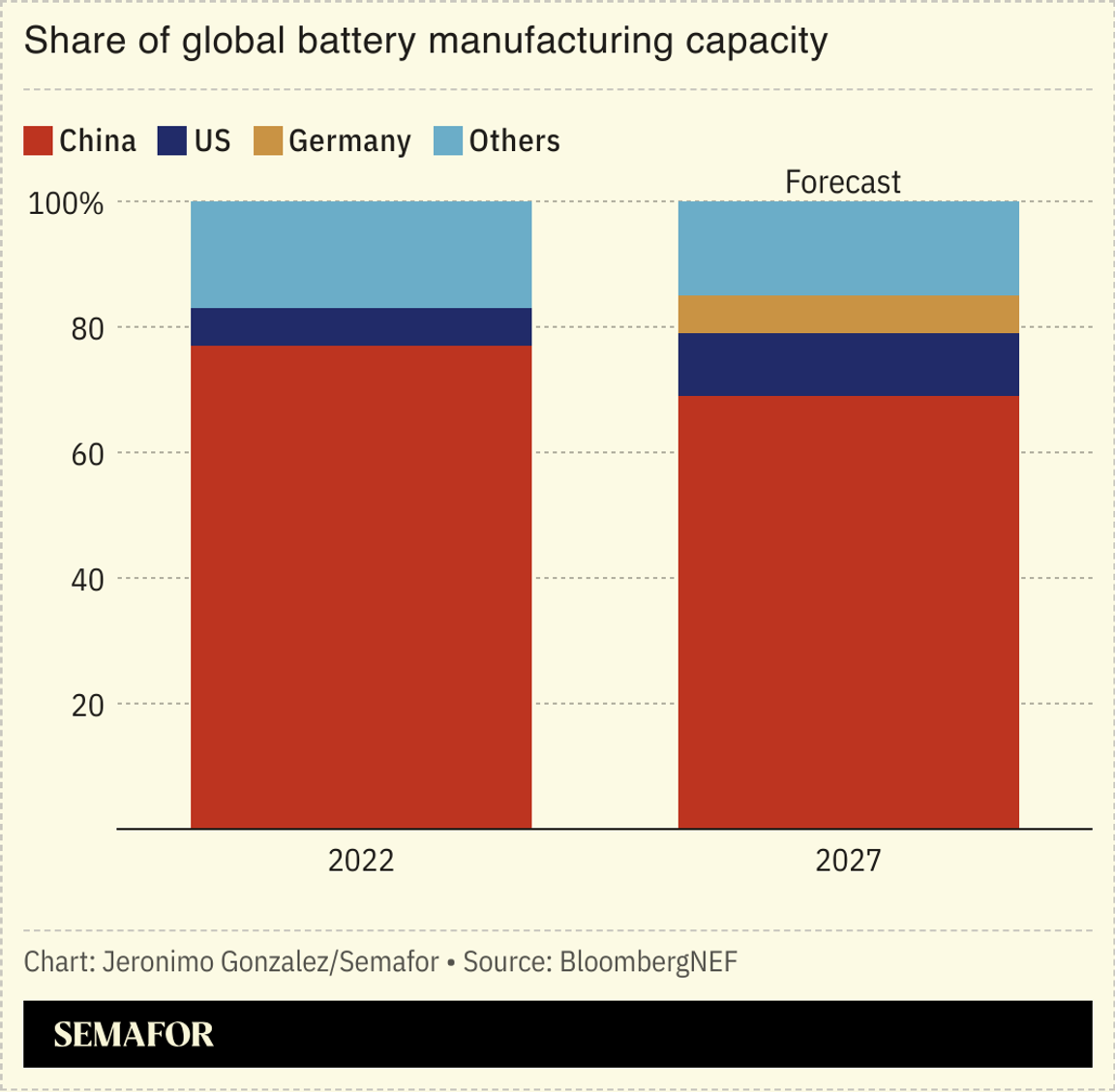 China plans to double its battery storage capacity by next year, an ambitious goal that could have massive downstream implications for the world’s energy transition. Beijing said it would invest $35 billion to build a “new energy storage system,” which would significantly expand China’s already world-leading capacity, the South China Morning Post reported. The breakthroughs in battery efficiency and manufacturing capacity needed to reach the goal could lead to a surge in global exports: Batteries are a key component in the energy transition as most solar electricity is generated when demand is low. According to the Global Battery Alliance, by 2030 batteries could account for 30% of the global emission reductions required in the transport and energy sectors. This item first appeared in Flagship, Semafor’s daily global affairs briefing. Subscribe here. → |
|
|
 New Energy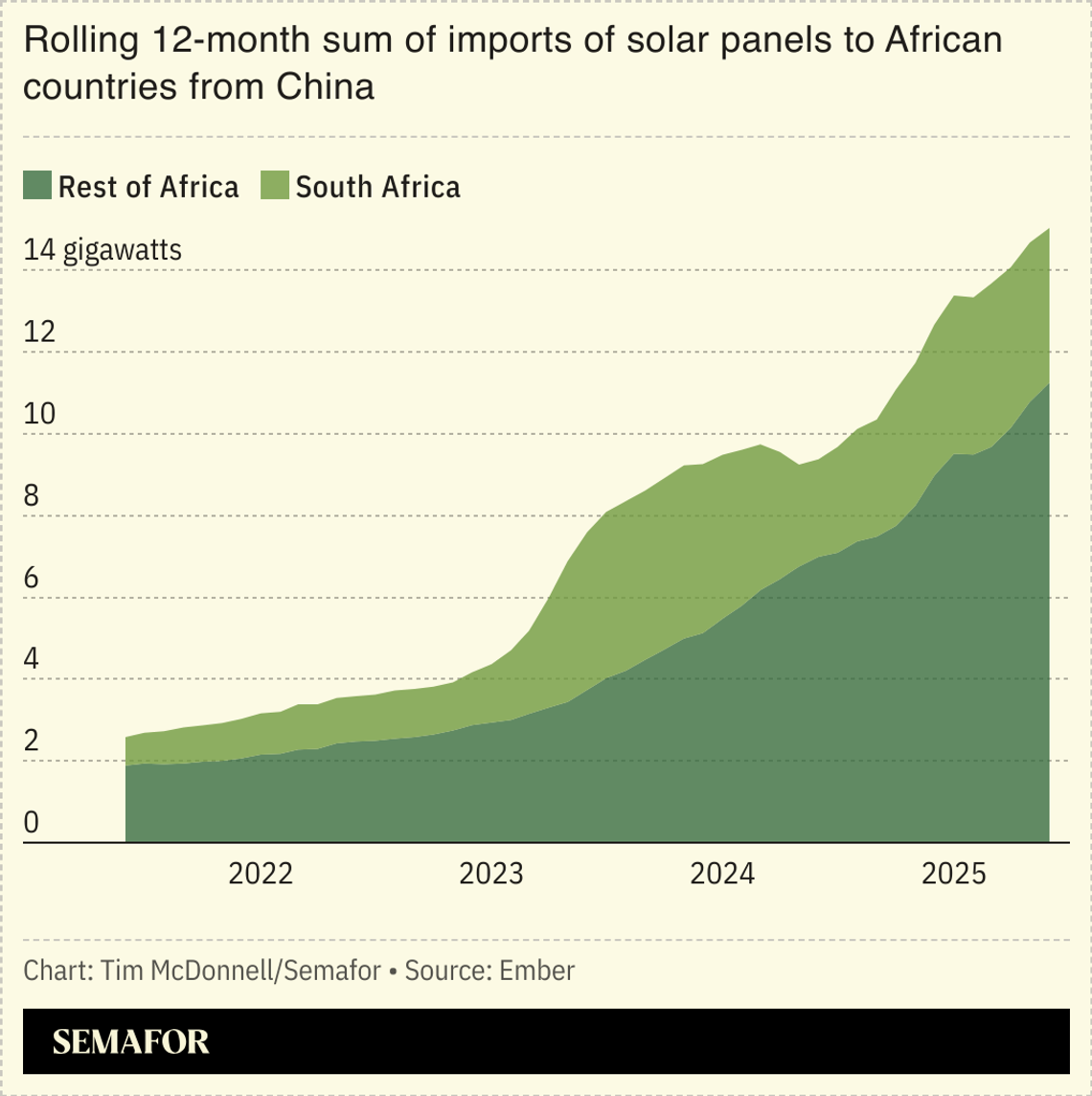 Fossil FuelsFinanceTech |
|
Gissell Lopez is Executive Director of Global Sustainable Solutions at JP Morgan. 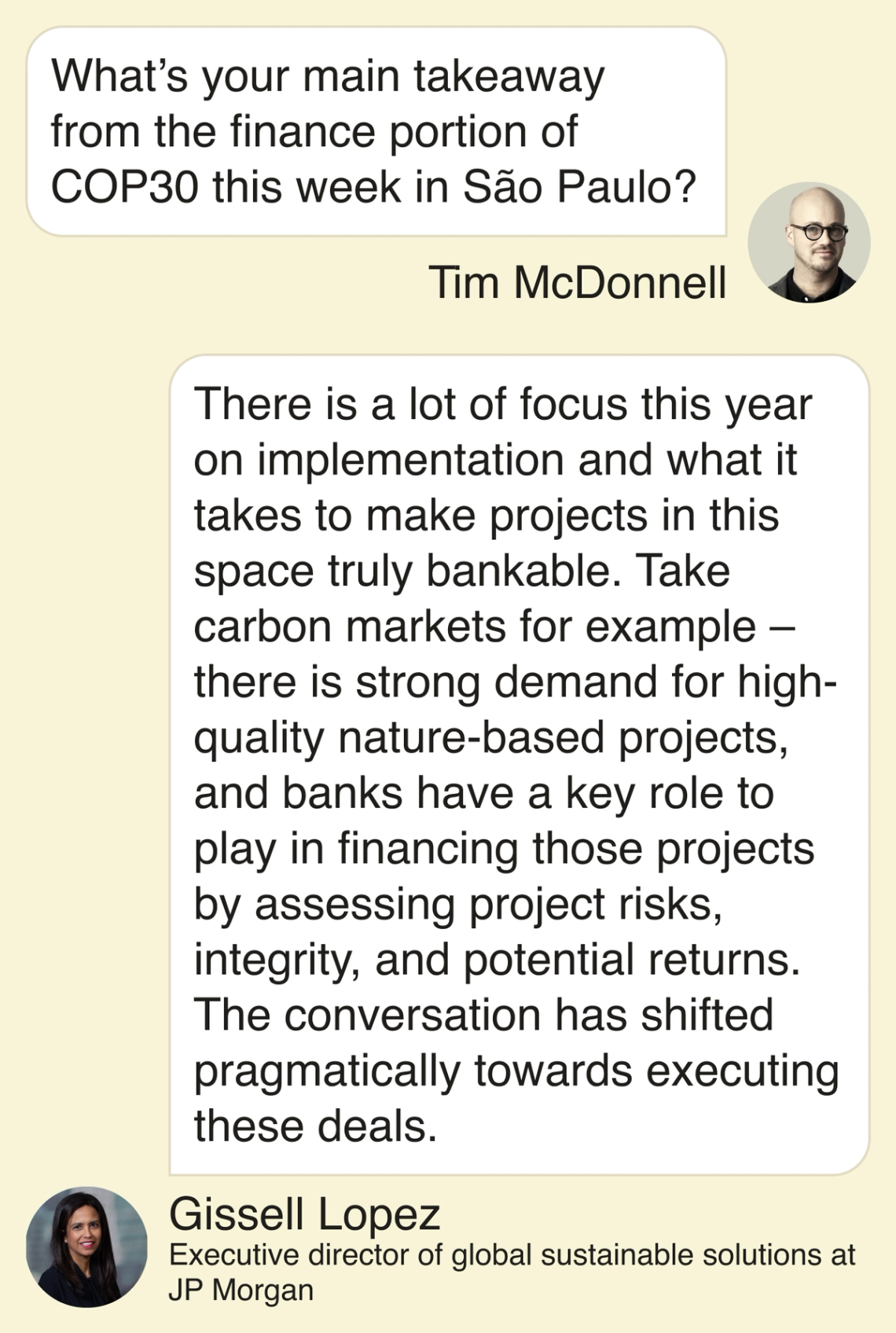 |
|
|